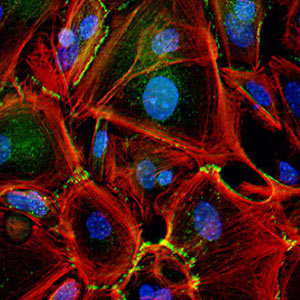
According to Dr. Andreas Emmendorffer, managing director of EuroDerm corporation, “We pluck a few hairs off the back of the patient’s head and extract adult stem cells from their roots, which we then proliferate in a cell culture for about two weeks.â€
“Then we reduce the nutrient solution until it no longer covers the upper sides of the cells, exposing them to the surrounding air. The increased pressure exerted by the oxygen on the surfaces of the cells causes them to differentiate into skin cells,” explains Emmendorffer.
In this way, the researchers can grow numerous small pieces of skin, produced individually for each patient, which add up to a surface area of 10 to 100 square centimetres when pieced together.
To ensure that they comply with the safety regulations at all times, the researchers are using new clean rooms at the IZI, a state-of-the-art facility for producing different kinds of cell therapeutics.
“We continuously measure the number of particles in the clean rooms. If there are too many particles in the air, an alarm goes off,” says IZI team leader Dr Gerno Schmiedeknecht.
The researchers expect to grow skin grafts for 10 to 20 patients a month in 2008, depending on how many doctors prescribe this therapy.
At present, chronic wounds are treated by grafting on the patients’ own skin, which is normally taken from the thigh. This leaves scars on both the thigh and the treated wound.
“If we produce this skin using the recently approved EpiDex technique instead, we can achieve the same chances of recovery without hurting the patient. Moreover, the artificial skin grows onto the wound without scarring,” says Emmendorffer.
Another advantage is that the transplantation can be performed on an outpatient basis. A few days later, it is already possible to see whether the new skin has adhered to the wound.
And 72 days later, the grafted skin can no longer be distinguished from healthy skin.
This could have potential for all kinds of clinical and biomedical applications including plastic and reconstructive surgery and the development of specialized implants.
